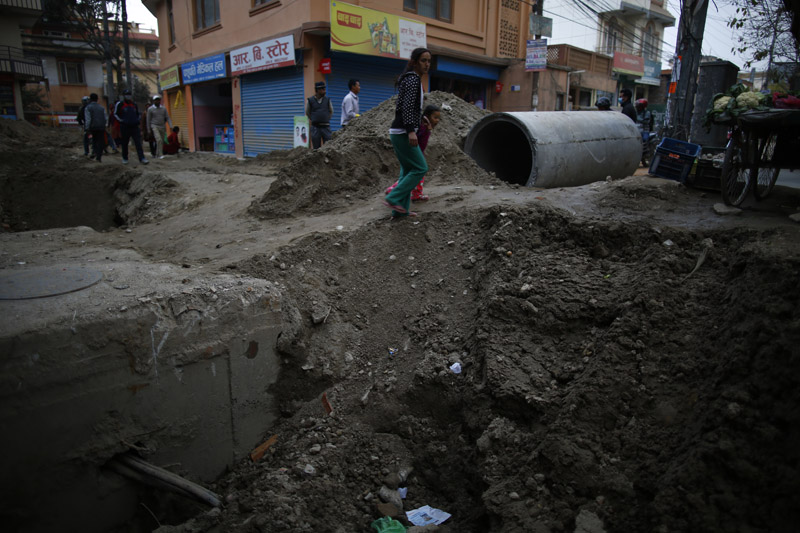Government urged to test sewage water for coronavirus
KATHMANDU, AUGUST 30
With the increased risk of cluster outbreak of the novel coronavirus in parts of the country, including Kathmandu valley, experts have urged the government to map coronavirus in sewage water so that outbreak clusters could be identified, infected people isolated immediately and treatment provided to the infected people before they developed serious symptoms of the disease.
Executive Director of Centre for Molecular Dynamics Nepal Dibesh Karmacharya said mapping of COVID-19 in sewage could save government resources and help it prevent the pandemic effectively. He said his office had conducted tests in sewage waters in four places of Kathmandu valley and found traces of COVID-19 in two places. He said if the government tested sewage water to ascertain the risk of COVID-19 infection, it could save a lot of money as it would have to test far fewer people.
“Once the government authorities find coronavirus in sewage water, they can take immediate steps to prevent the disease from spreading,” he said.
He added that health authorities can then conduct PCR tests among residents of the nearby areas.
National Health Research Council Researcher Meghnath Dhimal said mapping coronavirus in sewers in places that had already reported COVID-19 infection would not help much, but if researchers did their research in places where the contagion had not been reported, then that would certainly help the government to tackle the pandemic effectively.
Chairperson of National Health Research Council Anjani Kumar Jha said mapping of coronavirus in sewage water was not on the council’s research agenda for now.
Public health expert Samir Mani Dixit said the government was not keen to map coronavirus in sewers, but if the government did that, it would certainly save the government a lot of resources. “Testing of sewage water for coronavirus can help the government identify new places that are at risk of COVID-19 infection,” Dixit added.
A version of this article appears in e-paper on August 31, 2020, of The Himalayan Times.






